TOP STORY
Highway Safety
Protecting Utah
Rail Safety Week: Stop. Trains Can’t
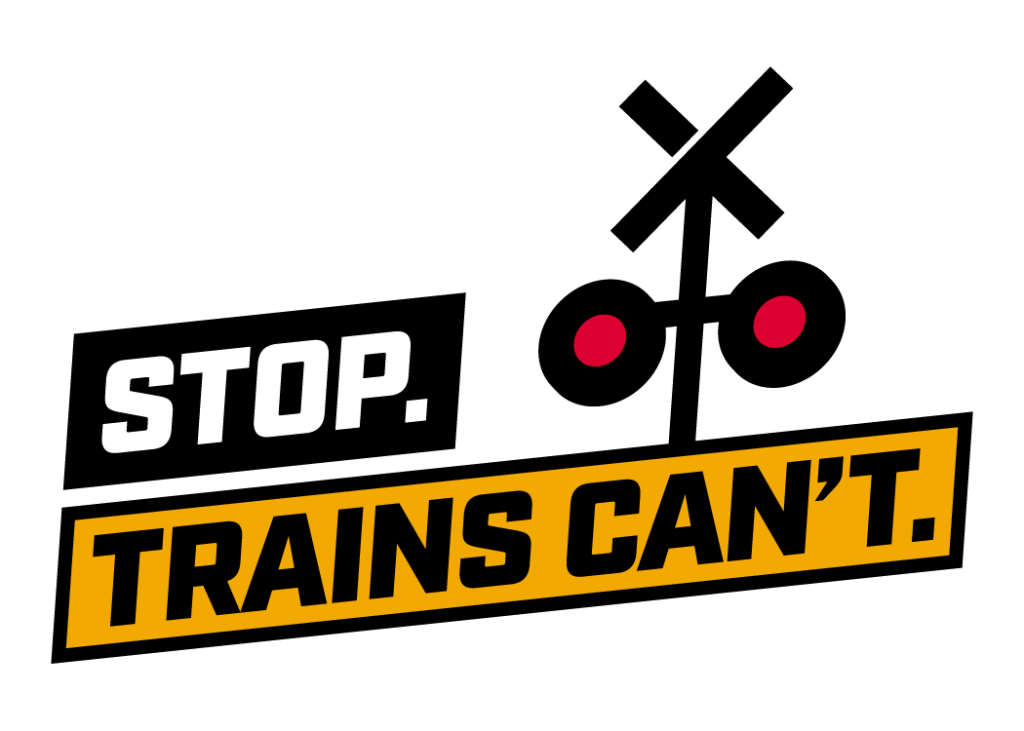
Rail Safety Week (RSW) is being held in Sept. 22-28 to empower people to keep themselves safe near tracks and trains.
The Utah Department of Public Safety, Utah Operation Lifesaver, the U.S. Department of Transportation, the Utah Transit Authority, the Utah Department of Transportation are working together to remind motorists, cyclists, and pedestrians about the lifesaving importance of railroad safety.
Reducing injuries and fatalities as Utahns travel across all modes is a top priority for state and federal agencies promoting safety. In the past 10 years (2009-2018) there have been 134 collisions at highway-rail grade crossings resulting in 28 fatalities and 40 injuries across the state. These safety advocates are working to reduce the risks of trespassing on or crossing rail-grade tracks, promote safe behavior on and around tracks, and reduce rail-related injuries and fatalities to zero .
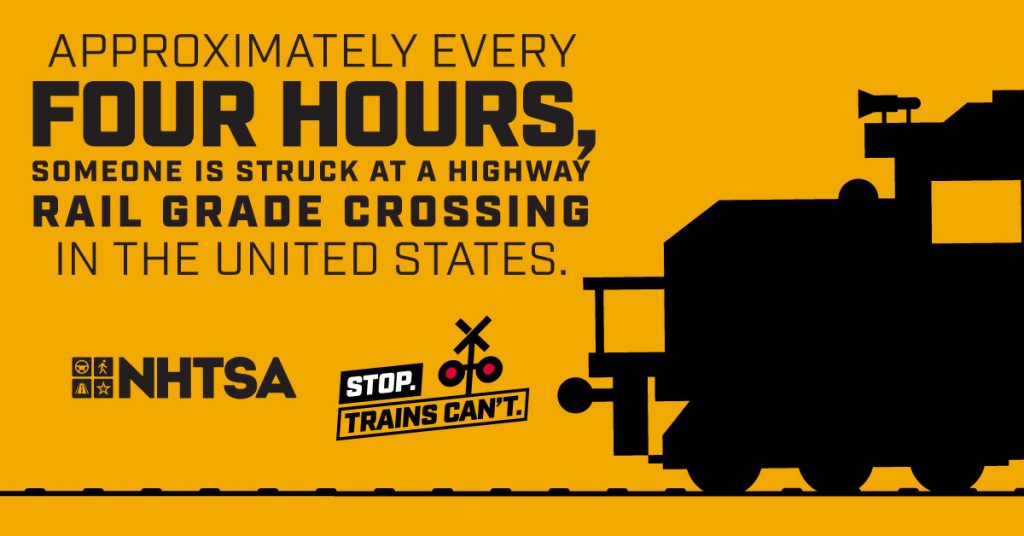
The U.S. Department of Transportation’s safety initiative, “Stop. Trains Can’t.”, reminds drivers, bicyclists, and pedestrians to look for the train and observe crossing devices. Trains cannot stop quickly enough to avoid a crash; everyone must stop and proceed with caution. State and federal partners are working with the rail, transit, and highway industry to improve multi-modal safety, but the public must make cautious decisions when nearing and crossing tracks to reach zero fatalities.
Watch a media story from Rail Safety Week kickoff here: https://kutv.com/news/local/rail-safety-week-kicks-off-in-utah-after-spike-in-deadly-train-crashes
The Stop. Trains Can’t campaign aims to help reduce collisions, deaths, and injuries at railroad crossings, which occur approximately every four hours. Because trains can take so long to stop, even in an emergency, it is ultimately the driver’s responsibility to avoid a collision with a train. Read on for more safety tips and facts.
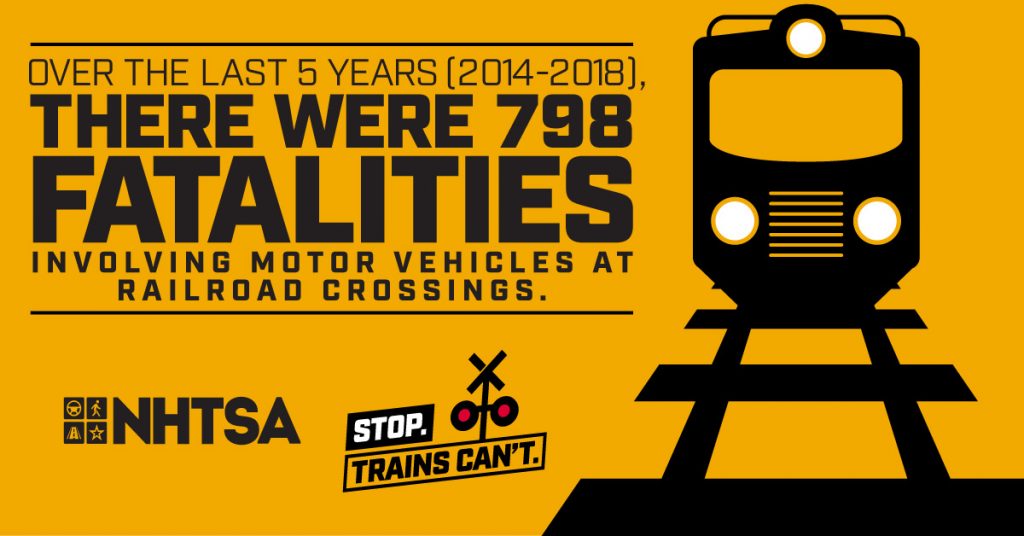
- In 2018 alone, 270 people were killed at railroad crossings. Over the last five years (2014-2018), there were 798 fatalities involving motor vehicles at railroad crossings.
- Although rail crossing incidents and fatalities have been on the decline for decades, the number of drivers going around gates at railroad crossings has spiked in recent years.
- In 2018 alone, 99 people were killed because a driver went around a lowered gate, marking a 10-year high.
- From 2014–2018, 1,538 drivers went around a lowered gate and were struck by a train, accounting for 14 percent of all collisions. These deaths were caused by risky driving behaviors and poor decision-making, which means these deaths could have been prevented.
Trains Always Have the Right of Way
- By law, trains have the right-of-way at all railroad crossings.
- Trains cannot swerve, stop quickly, or change direction to avert collisions. A train traveling at 55 miles per hour takes a mile or more to stop.
- State highway traffic safety laws require all drivers to slow, yield, or stop until the train has cleared the roadway and it is safe to cross.
- It is illegal to go around a lowered crossing gate or to ignore signs or flashing lights posted at a railroad crossing.
Know the Laws
- Of the 130,200 public railroad crossings in the United States, roughly 54 percent are “active” crossings that include warning devices such as gates, bells, or flashing lights to alert drivers of an approaching train. But 46 percent are “passive” crossings, and only signs and markings are present at these crossings.
- While warning devices do improve safety at railroad crossings, they do not prevent all collisions. Approximately 60 percent of all collisions at railroad crossings occur when active warning devices are present.
- Motorists must come to a complete stop at least 15 feet from the track if: 1) flashing red lights are activated, 2) a crossing gate is lowered, 3) a flagman signals you to stop, 4) a stop sign is posted, or 5) a train is clearly visible or a train whistle is audible.
- Ignoring signage or attempting to go around a lowered crossing gate can have deadly consequences. It is never worth risking your life or the lives of your passengers by ignoring the law or racing a train.
- The best way to avoid a collision with a train is to understand and follow the warning signage, and to always stop for a train.
Use Caution at Every Railroad Crossing
- When approaching a railroad crossing, slow down, look, and listen for a train on the tracks, especially at “passive” crossings.
- Look carefully in both directions before crossing a railroad track—even during the day. Sixty-seven percent of railroad crossing collisions occur in clear weather conditions.
- Do not rely on past experiences to guess when a train is coming. Trains can come from either direction at any time.
- Never race a train. It is easy to misjudge a train’s speed and distance from the crossing. A train traveling at 55 miles per hour takes a mile to stop—the length of 18 football fields or more — after applying the emergency brakes.
- Before entering a railroad crossing, check that there is enough room on the other side of the tracks for your vehicle to cross completely and safely. Be aware that you may need to cross multiple sets of tracks at some railroad crossings.
- Never stop on the railroad tracks. Keep moving once you have entered the crossing, and to avoid stalling, never shift gears on the tracks.
- If your vehicle stalls on a railroad track, quickly move away from the track and your vehicle at a 45-degree angle. Call the number on the Emergency Notification System sign, or, if the sign is not visible to you, dial 911 for help.


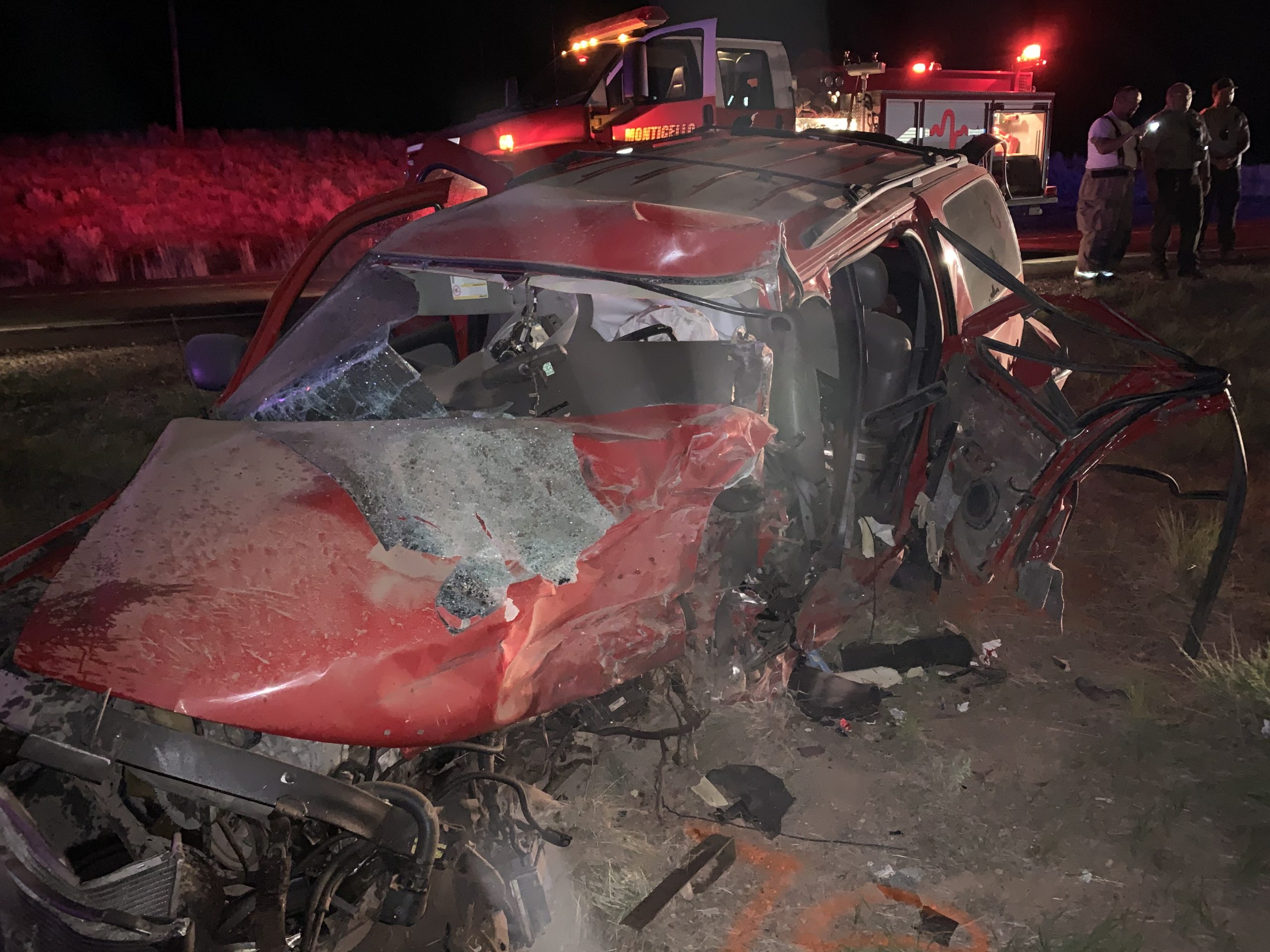


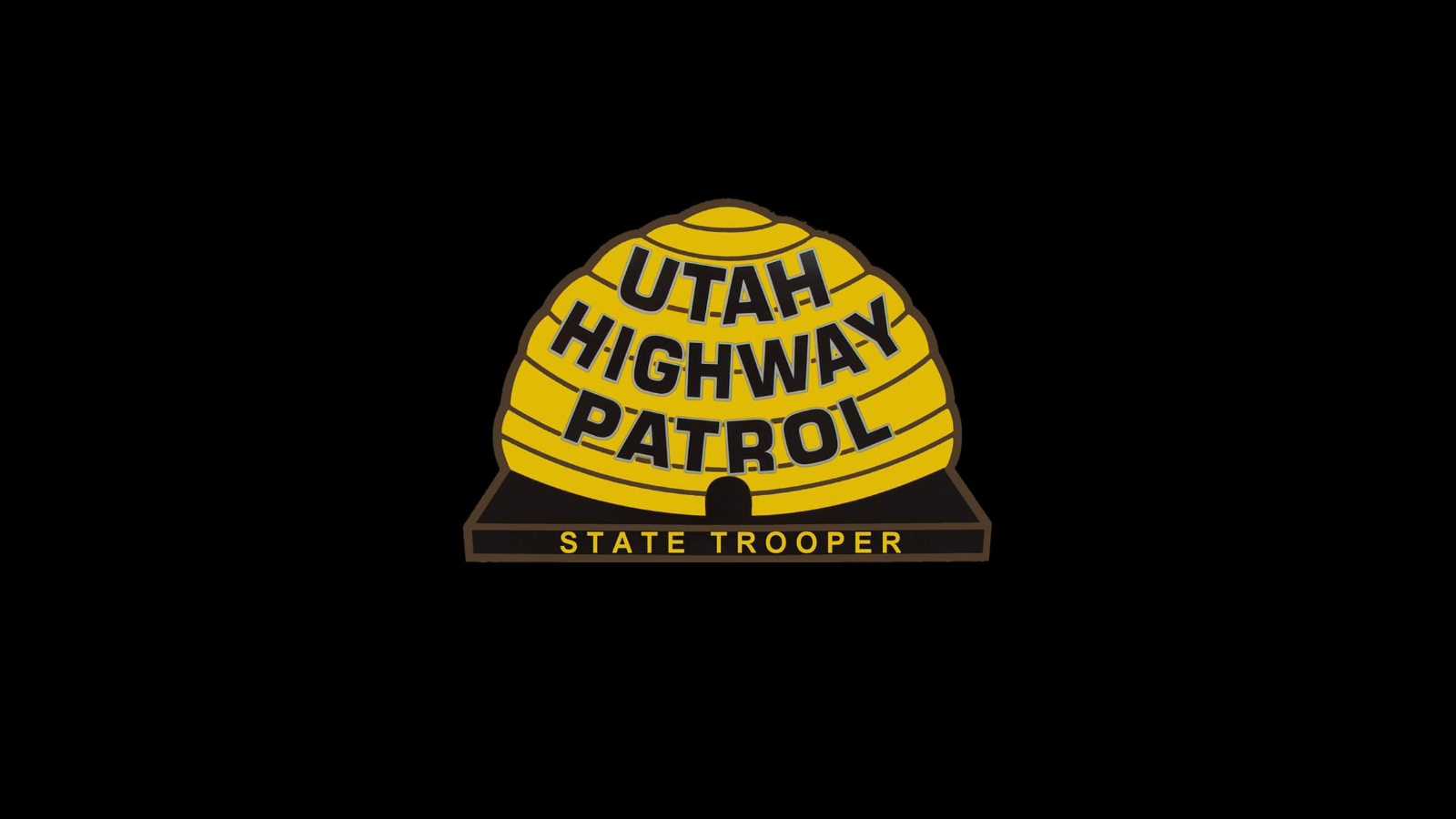
SHARE THIS STORY